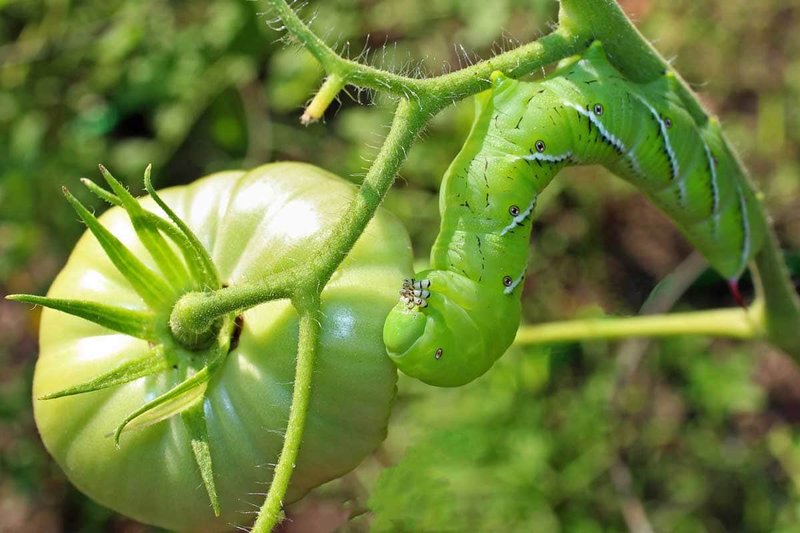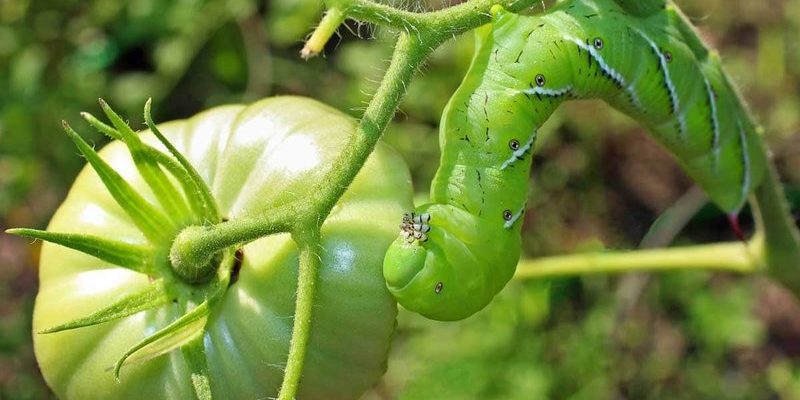
To really understand this, think of your tomato plants as a buffet for the hornworms. They’re drawn in by specific conditions and plant characteristics. You might be wondering, “Why my tomatoes?” The answer lies in what these little pests are specifically looking for—food, shelter, and sometimes a bit of extra warmth. In this article, we’ll dive deep into the factors that make tomato plants irresistible to hornworms and discuss practical ways to protect your beloved veggies.
Why Hornworms Love Tomato Plants
Hornworms are primarily attracted to tomato plants because they belong to the *Solanaceae* family, which also includes other favorites like peppers and eggplants. The green foliage provides an ideal dining experience for these caterpillars, allowing them to thrive and grow. Here’s the thing: hornworms are not picky eaters when it comes to their choices, but tomatoes have a specific allure.
From a biological perspective, the high nutrient content in tomato leaves makes them an excellent food source. Additionally, the texture of the leaves is quite tender compared to other plants. When hornworms find a well-established tomato plant, they often treat it like a five-star restaurant. This is a bit of a problem for gardeners, as a few hornworms can quickly turn into many if left unchecked.
Another factor is the availability of sunlight. Tomato plants love basking in the sun, and so do hornworms. The warmth and the rich green color of the plants create a tempting environment. As hornworms thrive in warmer temperatures, the combination of sun and the lush foliage of your tomato plants makes for a perfect storm.
Signs of Hornworm Infestation
If you suspect your tomato plants have been visited by hornworms, there are a few signs to look for. First, check for large, irregular holes in the leaves. If it looks like someone took a bite out of your plant, that’s a red flag. Just imagine having your delicious cake nibbled away!
Also, don’t overlook the droppings. Hornworms leave behind small black pellets, much like little nuggets of evidence. If you find these, it’s time to investigate further. Look closely at the undersides of leaves, as hornworms are experts at hiding. They can blend in so well with the foliage that they’re often hard to spot—like hiding in plain sight.
Lastly, keep an eye out for any signs of wilting or stunted growth. A stressed plant might just be responding to the munching of its leafy friends, signaling a potential hornworm problem. Catching these signs early can save your plants from more significant damage later on.
Attractive Conditions for Hornworms
Certain conditions in your garden can make it more appealing to hornworms. For starters, if your garden is full of lush, healthy tomato plants, you’re essentially rolling out the red carpet for them. They love greenery, so overgrown plants can attract more pests. Regularly pruning your tomato plants can help limit their appeal.
Another important factor is your garden’s proximity to other host plants. If you have peppers or other members of the *Solanaceae* family nearby, hornworms may have an open invitation. It’s like having too many trees in a forest; they can easily switch from one meal to another.
Light and moisture conditions also play a role. Hornworms prefer damp areas with lots of sunlight—much like how we enjoy a sunny beach on a warm day. If you’ve observed a lot of moisture in your garden, it might be time to reassess your watering practices. Keeping the soil healthier can reduce the likelihood of hornworms making your tomato plants their next stop.
Natural Predators of Hornworms
One of the best ways to combat hornworm problems is to attract their natural enemies. Beneficial insects like ladybugs and lacewings are excellent at keeping hornworm populations in check. They’re like your garden’s security team!
Parasitic wasps are another option. They lay their eggs inside hornworm larvae, effectively eliminating them from your garden. You might think this sounds a bit intense, but nature has its way of balancing things out. This is why creating a biodiverse garden with various plants can help maintain a healthy ecosystem.
Planting flowers like marigolds can also attract these useful insects. So, not only do you get a beautiful garden, but you also invite friendly helpers to your tomato plants. The goal is to create a balanced environment that naturally deters pests without having to resort to harsh chemicals.
Preventative Measures for Protecting Tomato Plants
Taking preventative action is key in keeping hornworms at bay. Start by regularly inspecting your tomato plants for signs of hornworms, especially during the growing season. Checking your plants at least once a week can help you catch these critters before they cause extensive damage.
Mulching your plants can also help. It retains moisture while ensuring the soil stays cooler, making it less attractive for hornworms. Think of mulch as a natural barrier that’s both functional and aesthetic.
Consider using organic pesticides as a last resort. Products containing *Bacillus thuringiensis* (Bt) are effective against hornworms and are safe for your plants and the surrounding environment. Just remember to always read the instructions carefully and apply them as directed.
What to Do If You Find Hornworms
If you discover hornworms munching on your tomato plants, act quickly! Handpicking is one of the most effective methods. Simply wear gloves and gently pluck them off the plants, then dispose of them elsewhere—like a plant party exile.
You can also try using a strong jet of water to dislodge them from your plants. Hornworms are hefty and may struggle to hold on, allowing you a chance to wash them away. Just be cautious with the water pressure to avoid harming the plants.
If the infestation is significant, you may need to consider more aggressive measures, such as insect traps or organic pesticides designed for hornworms. Always follow the product instructions and re-inspect your plants regularly afterward.
Understanding what attracts hornworms to tomato plants can help you protect your garden and enjoy a bountiful harvest. By keeping an eye on your plants and taking preemptive steps, you can create an environment that discourages these pests. Plus, attracting natural predators is a friendly and eco-friendly way to keep hornworms at bay.
So, next time you stroll through your garden, take a moment to appreciate the beauty of your tomato plants while also keeping an eye out for those sneaky hornworms. With the right knowledge and a proactive approach, you can ensure that your tomatoes remain safe and healthy. Happy gardening!

